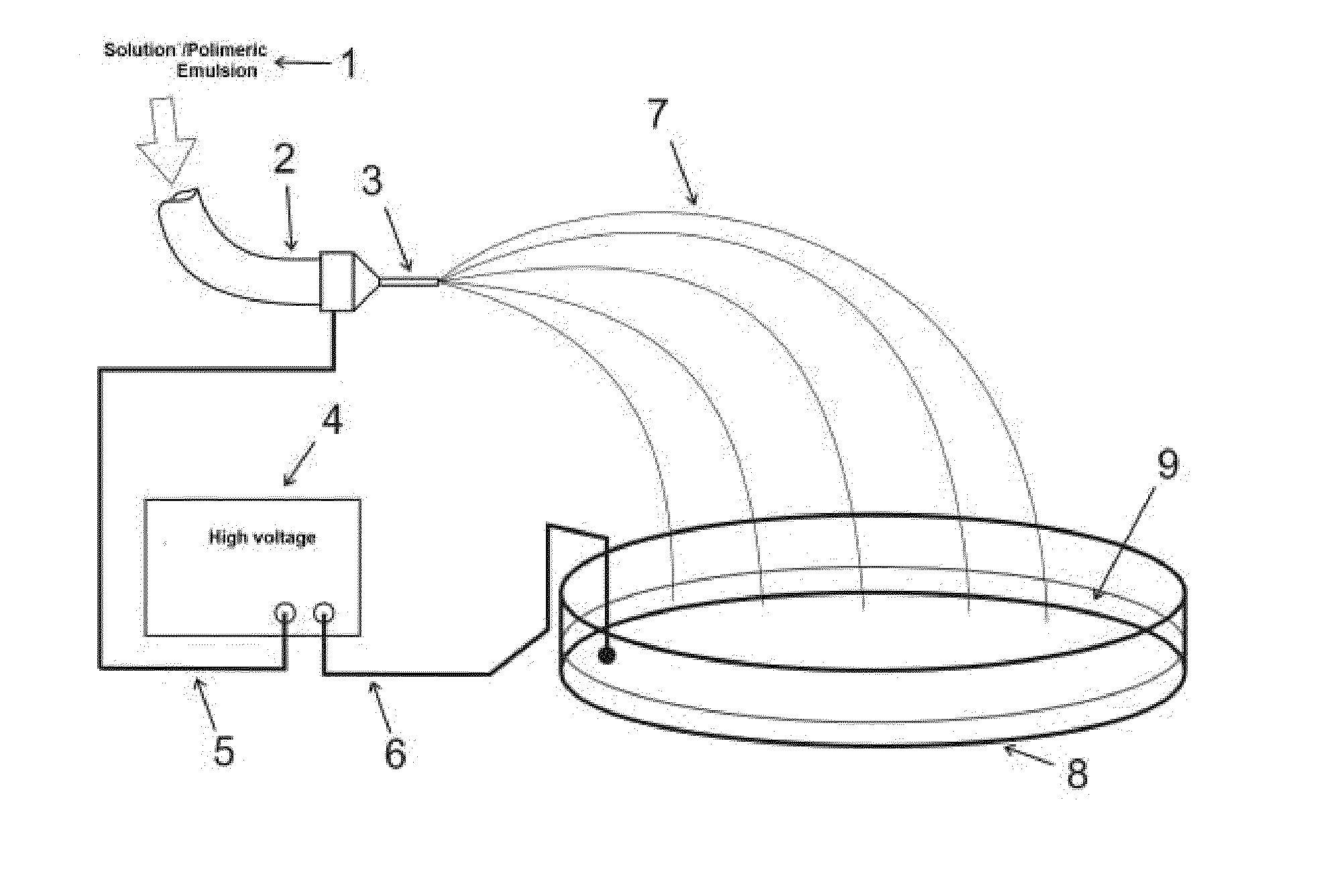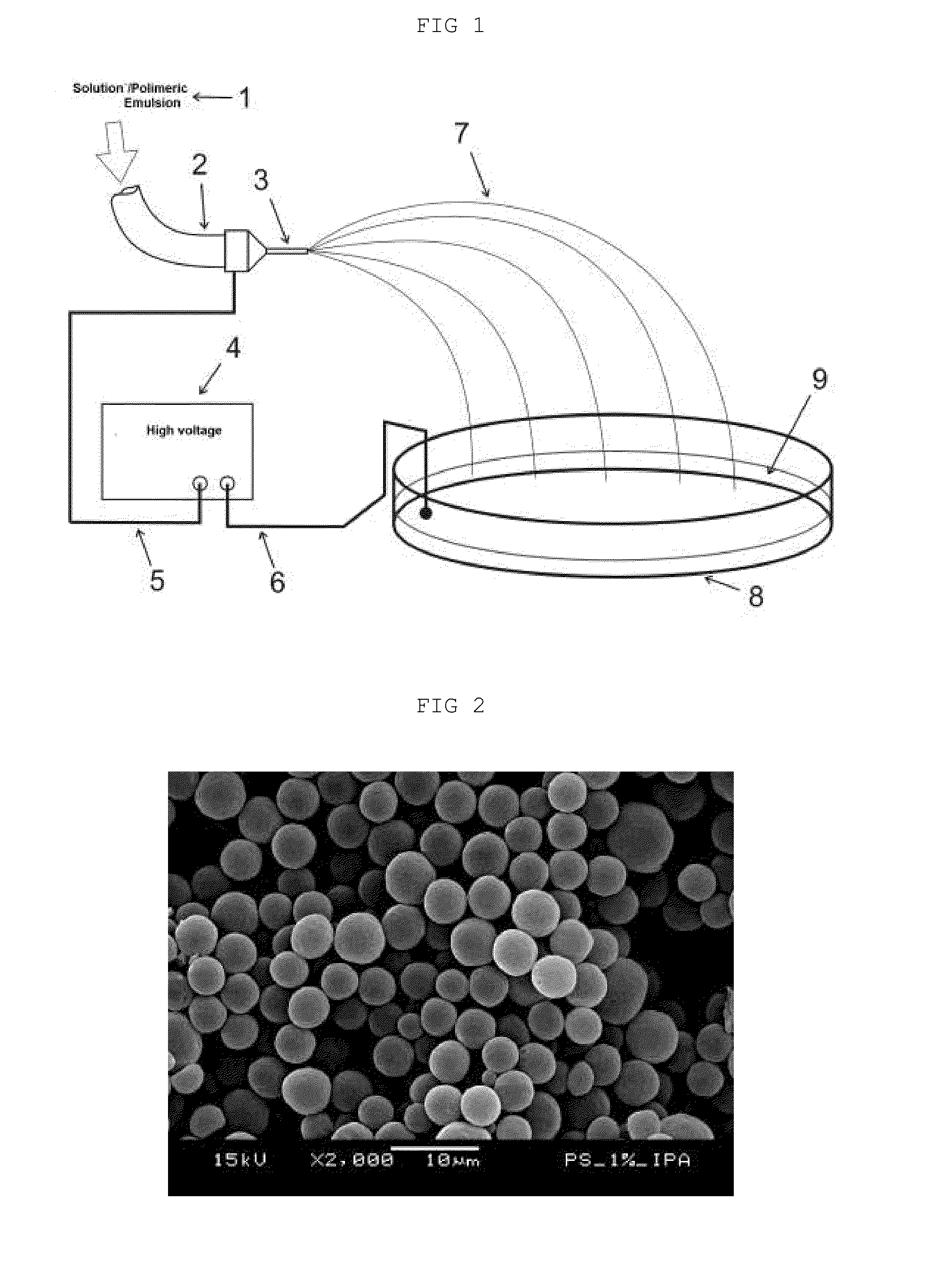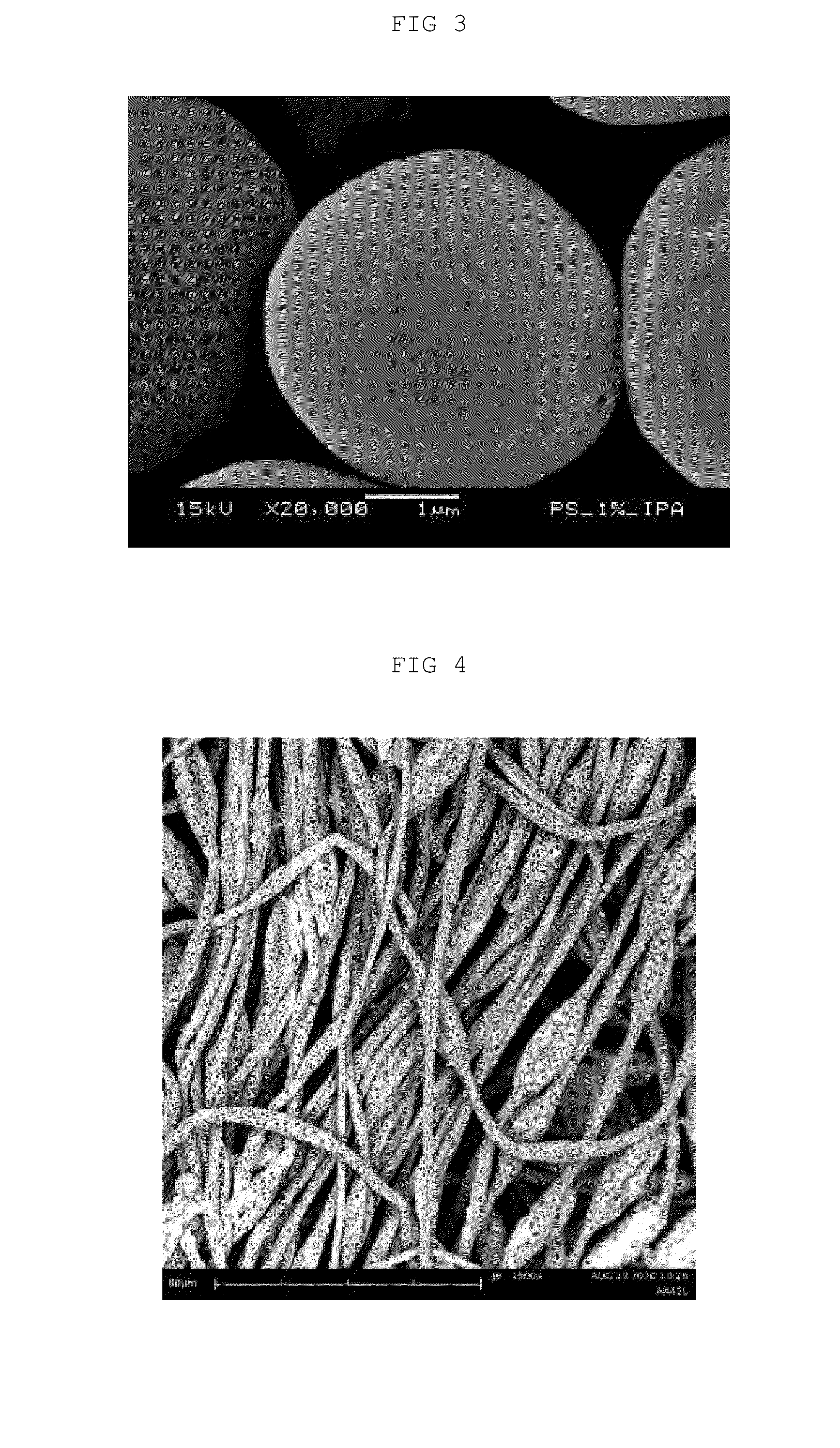Process for producing polymeric structures that have activated surfaces and activated polymeric structures
- Summary
- Abstract
- Description
- Claims
- Application Information
AI Technical Summary
Benefits of technology
Problems solved by technology
Method used
Image
Examples
example 1
Production of Polymeric Structures with Activated Surface
[0073]The polymeric structures with chemically activated surface were produced from using polymers of polystyrene or polymethylmetacrylate in chloroform or tetrahydrofuran. Solutions of 0.5% to 4.0% w / v of polymer were submitted to the process described in the present invention, by effect of a high electric field at different voltages. Deposition of the polymeric structures produced, was carried out on different conducting liquid surfaces from addition of several substances, resulting in different pH values, at room temperature. Thus, it was obtained particles and / or filaments by means of different conditions described in table 1.
TABLE 1Characteristics of the samples of polymeric structuresproduced and the conditions of the production process.Conductingliquid surfaceElectricSubstanceSpecialSampleCompositionfieldpHaddedconditionsParticlesPolystyrene6 KV12.5NaOHnotNaOH_AA75L0.5% w / v inapplicablechloroformParticlesPolystyrene7 KV...
example 2
Evaluation of the Binding Capacity of Activated Polymeric Surfaces
[0074]Activation of the polymeric surface can be observed through the binding capacity of this surface to other materials, such as molecules of interest. For verification of the binding capacity of the polymeric surface it was used a fluorescent reporter protein as a marker of the active sites. This binding occurs only if there are radicals of the carboxyl (COOH) type on the surface. Thus, the fluorescence detection means that the polymeric surface was efficiently activated by the binding between the surface and the reporter protein.
[0075]This test was performed by employing a conventional procedure in the state-of-the-art for determining the activation degree. This consists in using monobasic sodium phosphate (NaH2PO4), N-Hydroxysulfosuccinimide (Sulfo-NHS) and 1-ethyl-3-[3-dimethylaminopropyl]carbodiimide (EDC) hydrochloride as reagents to convert carboxyl groups into amino-reactive NHS esters, here named Sulfo-NHS / ...
example 3
Comparative Evaluation of the Binding Capacity of the Polymeric Surface Activated from Sulfo-NHS / EDC Treatment
[0081]Binding capacity of the surface of the polymeric structures produced by employing the process described in the present invention was compared to the binding capacity or the commercial particles.
[0082]Sulfo-NHS / EDC treatment makes feasible the conversion of the carboxyl groups into NHS amino-reactive esters present on activated surfaces, making it more competent to be bound to any aminated molecule.
[0083]Table 2 presents indices that allow to analyze comparatively the fluorescence produced by each sample after binding of the fluorescent reporter protein GFP.
TABLE 2Binding capacity of the samples submitted to Sulfo-NHS / EDC treatment from fluorescence detectionASDIDI / ASSampleMultiplier(μm2)(UA)(UA / μm2)HCl_AA76L10162.31055.70.7NaOH_AA75L2182.83552.19.7NaBr_AA77L2168.04662.313.9Mag_NaBr_AA68L2126.54762.318.8Arcomp_NaBr_AA80L1191.711420.859.6Commercial543.3807.13.7AS: area o...
PUM
| Property | Measurement | Unit |
|---|---|---|
| Electric field | aaaaa | aaaaa |
Abstract
Description
Claims
Application Information
 Login to View More
Login to View More - R&D
- Intellectual Property
- Life Sciences
- Materials
- Tech Scout
- Unparalleled Data Quality
- Higher Quality Content
- 60% Fewer Hallucinations
Browse by: Latest US Patents, China's latest patents, Technical Efficacy Thesaurus, Application Domain, Technology Topic, Popular Technical Reports.
© 2025 PatSnap. All rights reserved.Legal|Privacy policy|Modern Slavery Act Transparency Statement|Sitemap|About US| Contact US: help@patsnap.com



